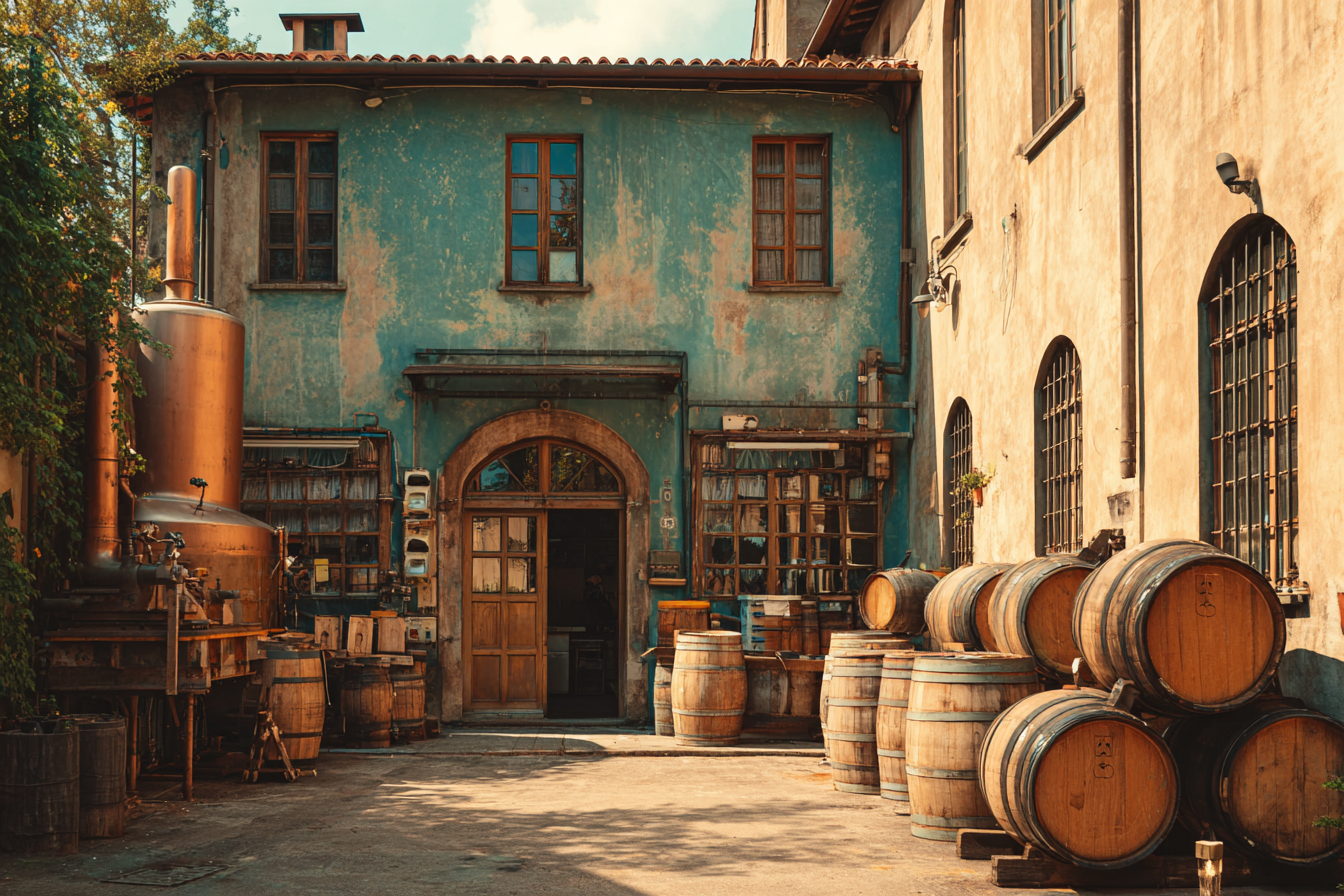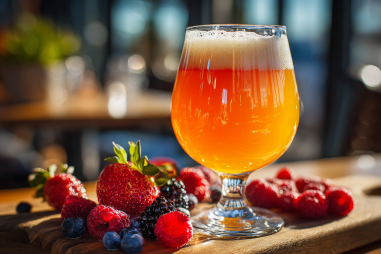Italy is renowned worldwide for its rich culinary traditions, captivating landscapes, and timeless art. Yet, nestled within its diverse gastronomic culture lies a beer style that has steadily gained prominence and admiration — the Italian Pilsner. This lively lager combines crispness, subtle bitterness, and refreshing qualities that make it a beloved favorite among beer enthusiasts. But how did this style come to be? What are its origins and the influences that shaped it? Dive with us into the fascinating history and evolution of the Italian Pilsner, tracing its journey from early brewing traditions to its contemporary craft resurgence and cultural significance.
Early Brewing Traditions in Italy
Before the Italian Pilsner became recognized as a distinct style, Italy’s beer culture was relatively modest compared to neighboring countries like Germany or the Czech Republic. Historically, Italy was predominantly a wine-drinking nation, with beer taking a secondary role, often consumed in specific regions rather than nationwide. Early brewing in Italy was concentrated in the northern regions, particularly Lombardy, Veneto, and Trentino-Alto Adige, areas closer to Central Europe where beer traditions were more established.
During the 19th century, the brewing landscape in Italy was dominated by small-scale local breweries producing mainly bottom-fermented lagers inspired by German styles. These breweries focused on creating easy-to-drink beers suited to local tastes and the Mediterranean climate. The brewing knowledge and techniques used were often imported or adapted from neighboring countries, setting the stage for the eventual emergence of the Italian Pilsner style.
Influence of German and Czech Pilsners on Italian Variants
The Italian Pilsner owes much of its DNA to the classic Pilsner beers of Germany and the Czech Republic. The original Pilsner style hails from the early 19th century in Plzeň (Pilsen), Czech Republic, where brewers crafted a clear, golden lager characterized by a distinct hop bitterness and delicate malt sweetness. The style quickly expanded through Germany and beyond, inspiring countless interpretations.
Italy’s geographical proximity and historic trade connections with Central Europe meant that German and Czech brewing traditions deeply influenced Italian brewers. German-style Pilsners, known for their crispness, moderate bitterness, and floral hop aromas (often utilizing noble hops like Hallertau or Tettnang), were particularly impactful. Italian brewers learned and adapted these recipe elements, tweaking them to suit their palate preferences and local market demands.
Notably, Italian Pilsners tend to be lighter in body with a slightly softer bitterness compared to their German and Czech counterparts, aligning with Italian preferences for refreshment over intense hop character. This stylistic adaptation embodies how Italian brewers embraced external influences while striving to create something uniquely suited to Italy’s brewing landscape.
Evolution of the Italian Pilsner Style Over Time
Italian Pilsner did not jump into existence overnight. Its evolution was gradual, building upon a foundation of imported techniques and native innovation. Through the early to mid-20th century, Italian breweries increasingly incorporated Pilsner-style lagers into their product lines as industrial brewing expanded. These lagers grew popular due to their refreshing qualities, which were ideal in the Mediterranean climate.
Post-World War II was a pivotal era. Italy’s booming economy and increasing exposure to global culture fueled a rising demand for varied beer styles. Breweries began fine-tuning their Pilsner recipes, balancing bitterness, malt character, and clarity. Around this time, the Italian Pilsner gained a recognizable profile: bright, straw to golden in color, with a crisp finish and a moderate yet approachable hop bitterness.
Over the decades, its consistency and drinkability helped it become a staple lager across Italy’s diverse regions. The style’s approachable profile opened doors for wider acceptance and integration into Italy’s mostly wine-dominated beverage culture.
Key Breweries and Pioneers in Italy
The growth and widespread acceptance of the Italian Pilsner owe much to several pioneering breweries that championed this style and refined its character. Names like Birra Peroni and Moretti were instrumental early on, laying the groundwork for Italian lagers that incorporated Pilsner traits. These companies were among the first to commercialize lagers that appealed broadly across Italy and even internationally.
In more recent decades, the craft beer movement in Italy has led to a renewed interest in native and refined interpretations of the Italian Pilsner. Small and innovative breweries have embraced this style, experimenting with local ingredients and distinctive hop varieties to create modern versions of the Italian Pilsner that honor tradition while pushing flavor boundaries.
Among the notable modern pioneers, breweries such as Birrificio Italiano, Baladin, and Lambrate have played critical roles. Their craft-driven approach has elevated the Italian Pilsner within both domestic and export markets, attracting new generations of drinkers eager to explore the nuances of this featured lager.
Modern Resurgence and Craft Interpretations
Thanks to the international craft beer renaissance, the Italian Pilsner has experienced a remarkable resurgence. Craft brewers across Italy have rediscovered this style, appreciating its versatility and refreshing qualities, perfect for summer drinking and pairing with Italian cuisine.
Modern Italian Pilsners often feature enhanced hop aromas and flavors, at times blending traditional noble hops with Mediterranean and experimental varieties, lending floral, herbal, or citrus notes. Moreover, some brewers experiment with organic and local malts, emphasizing sustainability and terroir.
The craft scene has also introduced variations in alcohol content, mouthfeel, and carbonation levels to meet a broad range of preferences. This diversity showcases the adaptability of the Italian Pilsner, reaffirming its position as a dynamic and evolving beer style.
Cultural Significance in Italy Today
Today, the Italian Pilsner is more than just a style; it symbolizes Italy’s embrace of beer as a serious and sophisticated craft, complementing the country’s rich beverage traditions. It represents a bridge between Italy’s historical brewing roots and contemporary innovation.
The Italian Pilsner is frequently enjoyed at social gatherings, festivals, and restaurants, valued for its ability to refresh the palate and pair effortlessly with the local cuisine. Its crispness cuts through rich flavors like pasta, seafood, and charcuterie, making it a popular choice for both casual and gourmet dining.
Moreover, the Italian Pilsner reflects the broader trend of regional pride and craftsmanship within Italy’s emerging beer culture, highlighting a national identity that respects tradition yet embraces change.
The Legacy of Italian Pilsner
The Italian Pilsner stands today as a testament to the country’s brewing journey—from early European influences and modest beginnings to modern refinement and craft innovation. It captures the essence of Italian brewing creativity: combining imported inspiration with local flavor to produce a beer that is distinctly Italian yet globally appreciated.
For beer lovers and casual drinkers alike, the Italian Pilsner offers a refreshing and enjoyable experience rooted in history but alive with contemporary relevance. Whether shared among friends at a summer gathering or sipped alongside a fine meal, the Italian Pilsner continues to carve out its niche in Italy’s evolving and vibrant beer landscape.







